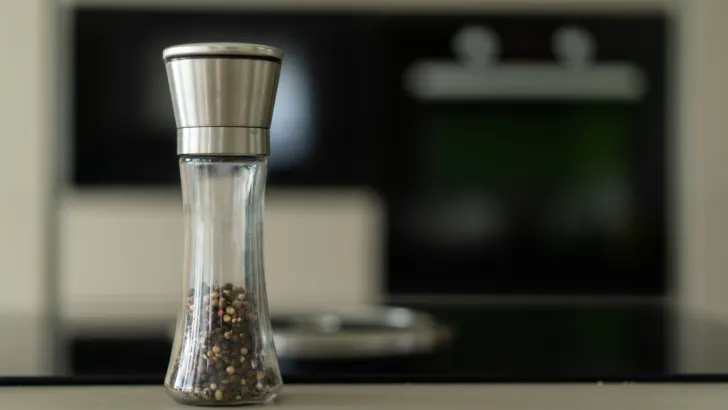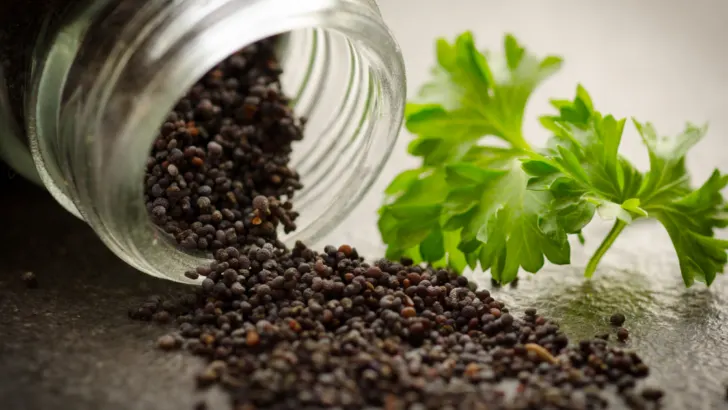
Spice Chronicles – Unveiling the Mystery of Kitchen Pepper
What is Kitchen Pepper and How to Use It in Cooking
As a big foodie who spends countless hours in the kitchen, I thought I would share my knowledge about one of my favorite spices today: kitchen pepper. I’m passionate about food and cooking, and I believe that everyone should know about the power of kitchen pepper.
What is kitchen pepper? Well it is a versatile spice that can be used to add flavor to a variety of dishes. It’s also good for you! Kitchen pepper is a source of vitamins and minerals, and it has been shown to have a number of health benefits.
In this blog post, I’ll discuss the history of kitchen pepper, its different types, how to use it in cooking, and its health benefits. I hope you’ll find this information helpful!
I’m also excited to hear from you! If you have any questions about kitchen pepper, please feel free to leave a comment below. I’ll do my best to answer them.
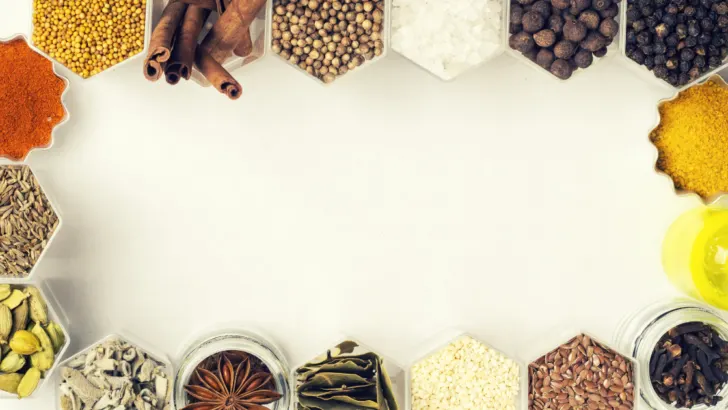
Culinary Enigma – Exploring the Origins of Kitchen Pepper
What is Kitchen Pepper?
Kitchen pepper is a spice blend that has been used in cooking for centuries. It is a combination of various spices that were commonly found in the kitchens of the 18th and 19th centuries. The blend typically includes black pepper, salt, allspice, cinnamon, and cardamom.
Kitchen pepper was used in a variety of dishes, including soups, stews, and roasted meats. It was also used to season vegetables and sauces. The blend was popular because it added a depth of flavor to dishes without overpowering the other ingredients.
One of the benefits of kitchen pepper was that it was easy to make. Most households had the necessary spices on hand, and the blend could be quickly mixed together. This made it a convenient and cost-effective way to add flavor to meals.
Kitchen pepper was also versatile. The blend could be adjusted to suit individual tastes by adding more or less of certain spices. Some recipes even called for additional ingredients, such as ginger or nutmeg.
Overall, kitchen pepper was an essential part of many kitchens in the past. Its popularity has waned over time, but the blend is still used by some chefs and home cooks today.
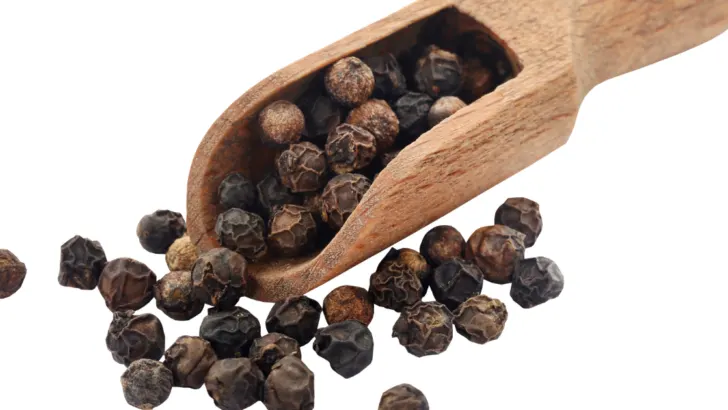
Flavors of the Past – Delving into the World of Kitchen Pepper
A bit of History about what is Kitchen Pepper
Kitchen Pepper is a blend of spices that has been used in kitchens for centuries. I find it fascinating that this spice blend has a long and varied history that spans continents and centuries. The origins of Kitchen Pepper can be traced back to medieval times, where cooks would create their own unique blend of spices and herbs to flavor their dishes.
As trade routes opened up, new spices and herbs were introduced to Europe, and the spice blends became more complex. In the 16th and 17th centuries, Kitchen Pepper became popular in England and France, where it was used to flavor everything from soups and stews to roasted meats and vegetables.
During the 18th century, Kitchen Pepper became more standardized, and recipes for the blend began to appear in cookbooks. The blend typically consisted of black pepper, cinnamon, nutmeg, ginger, and cloves. However, variations of the blend were common, and some cooks would add other spices like cardamom, allspice, or mace.
Kitchen Pepper was particularly popular in North America during the colonial period. The blend was used extensively in the kitchens of early settlers, who would use it to flavor their dishes on the frontier. The popularity of Kitchen Pepper can be attributed to the limited space available during traveling, as it was easier to carry one little vial of “pepper” rather than several different spices.
Today, Kitchen Pepper is still used in kitchens around the world. While the blend has evolved over time, it remains a versatile and flavorful addition to many dishes.
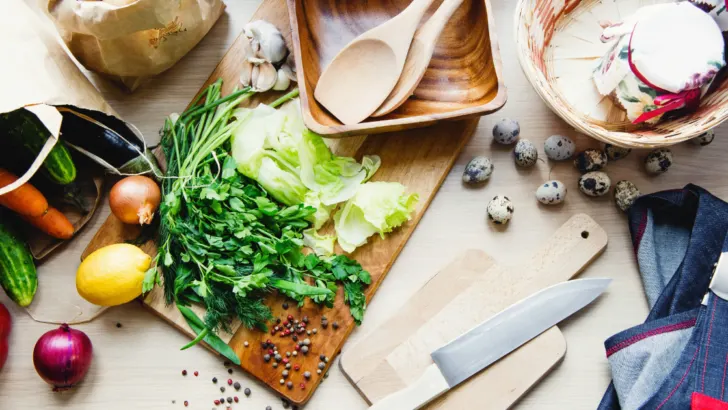
Historical Spice Blend – Discovering the Allure of Kitchen Pepper
Types of Kitchen Pepper
As a spice blend, kitchen pepper can be made up of various types of peppercorns and other spices. Here are some of the most common types of kitchen pepper:
Black Pepper
Black pepper is perhaps the most well-known type of pepper. It is made from the dried fruit of the Piper nigrum plant and has a pungent, slightly spicy flavor. Black pepper is a staple in many spice blends, including kitchen pepper.
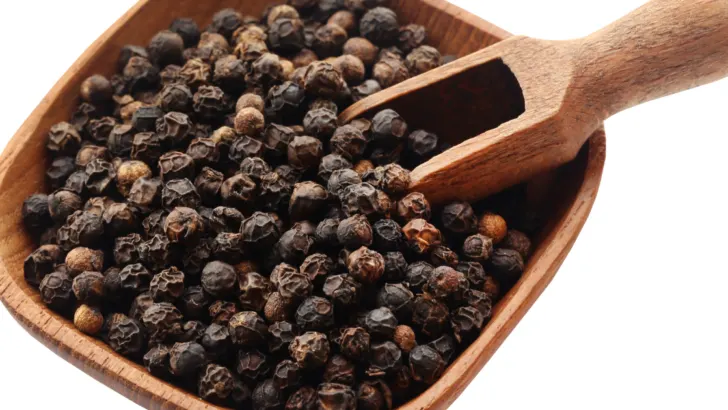
Ancient Aromatics – Decoding the Secrets of Kitchen Pepper
White Pepper
White pepper is also made from the Piper nigrum plant, but it is made from the seed rather than the fruit. It has a milder flavor than black pepper and is often used in dishes where the black specks of black pepper would be visually unappealing.
Green Peppercorns
Green peppercorns are unripe pepper berries that are picked before they have fully matured. They have a milder flavor than black pepper and are often used in dishes where a more subtle pepper flavor is desired.
Pink Peppercorns
Pink peppercorns are not actually a true pepper, but rather the dried fruit of the Schinus molle plant. They have a sweet, fruity flavor and are often used in spice blends for fish and poultry.
Szechuan Peppercorns
Szechuan peppercorns are not actually a true pepper either. They come from the Zanthoxylum simulans plant and have a unique, numbing flavor. They are often used in Chinese cuisine and in spice blends for meat dishes.
Tellicherry Peppercorns
Tellicherry peppercorns are a type of black pepper that comes from the Malabar coast of India. They are larger and have a more complex flavor than regular black pepper.
Malabar Peppercorns
Malabar peppercorns are another type of black pepper that comes from the Malabar coast of India. They have a bold, spicy flavor and are often used in spice blends for meat dishes.
Long Pepper
Long pepper is a type of pepper that comes from the Piper longum plant. It has a spicy, slightly sweet flavor and is often used in spice blends for meat dishes.
Cubeb Pepper
Cubeb pepper comes from the Piper cubeba plant and has a slightly bitter, pungent flavor. It is often used in spice blends for fish and poultry.
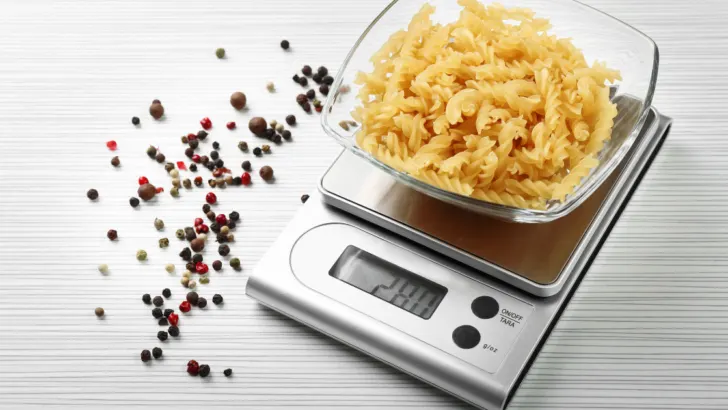
Spice Time Travel – Journeying Through the Ages with Kitchen Pepper
Ashwagandha Pepper
Ashwagandha pepper is not actually a true pepper, but rather a spice made from the root of the Withania somnifera plant. It has a slightly bitter, earthy flavor and is often used in Indian cuisine.
Overall, Kitchen pepper is a versatile spice that can add a unique flavor profile to any dish. There are many different types of kitchen pepper, each with its own distinct flavor. Black pepper is the most common type of kitchen pepper and has a sharp, pungent flavor. White pepper is milder and has a more citrusy flavor. Green peppercorns are grassy and fruity, while pink peppercorns are milder and have a slightly sweet flavor.
Pepper can be used whole, ground, or crushed. It can be added to dishes at the beginning of cooking, or at the end to add a finishing touch. Pepper is a common ingredient in many popular spice blends, such as Cajun seasoning, Creole seasoning, and garam masala.
The best way to find your favorite kitchen pepper is to experiment with different types and blends. Start with a small amount of pepper and taste as you go. You may be surprised at how much flavor a little bit of pepper can add to your dishes.
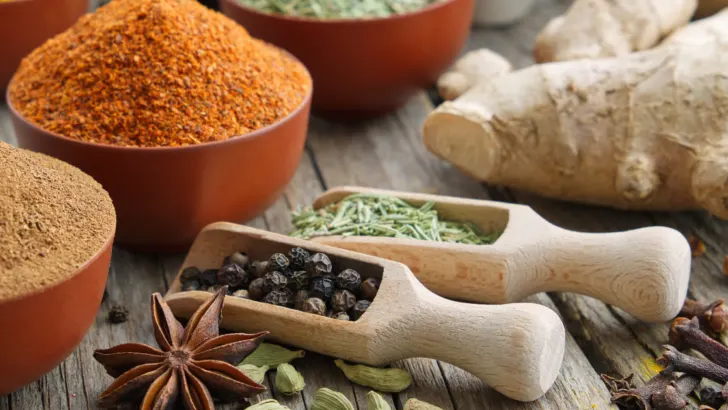
The Spice of Ages: Kitchen Pepper’s Enduring Appeal
Has Kitchen Pepper Been Used for Centuries as a Seasoning and Spice?
I have always been fascinated by the history of spices, and kitchen pepper is no exception. Pepper has been used as a seasoning and spice for centuries. The earliest evidence of pepper use dates back to 3000 BC in India. Pepper was also used by the ancient Greeks, Romans, and Egyptians. In fact, the Romans were so fond of pepper that they named it “black gold.” Pepper was one of the most expensive spices in the world during the Middle Ages, and it was often used as a form of currency.
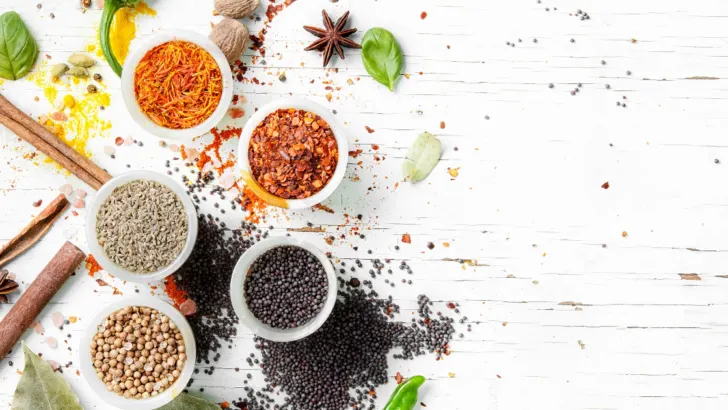
Spice Cabinet Nostalgia – The Story Behind Kitchen Pepper
Was Kitchen Pepper Native to India and Was it First Cultivated in the Malabar Coast?
Pepper is native to India and was first cultivated in the Malabar Coast, which is located in the southwestern region of India. The spice was highly valued and was traded throughout the ancient world.
The Malabar Coast is a region of India that is known for its rich history of spice cultivation. Pepper is one of the most important spices that is grown in the Malabar Coast, and it has been cultivated there for centuries. The climate and soil conditions in the Malabar Coast are ideal for growing pepper, and the region produces some of the finest pepper in the world.
Pepper was first cultivated in the Malabar Coast in around 3000 BC. The spice was quickly traded throughout the ancient world, and it became one of the most valuable commodities in the region. Pepper was used as a seasoning, a preservative, and a medicine. It was also used as a form of currency.
The demand for pepper was so high that it led to the development of the spice trade routes. The spice trade routes were a network of trade routes that connected India with the rest of the ancient world. The spice trade routes were incredibly important for the development of global trade and commerce.
Today, pepper is still grown in the Malabar Coast. The region is still one of the world’s leading producers of pepper. Pepper is also grown in other parts of the world, including Vietnam, Brazil, and Indonesia.
Pepper is a versatile spice that can be used to flavor a variety of dishes. It is a common ingredient in curries, stir-fries, and sauces. Pepper can also be used to add flavor to vegetables, meats, and seafood.
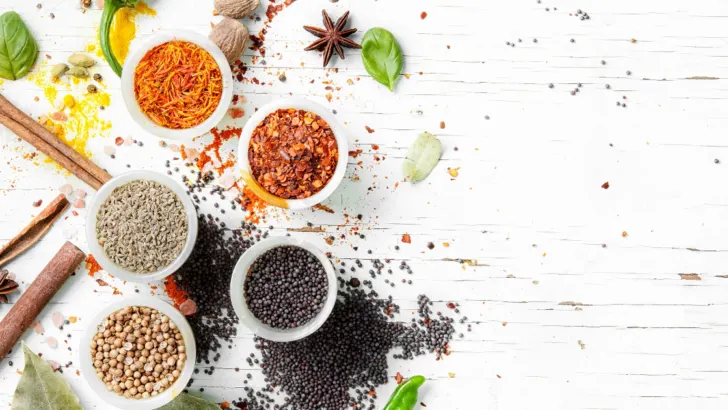
Spice Cabinet Nostalgia – The Story Behind Kitchen Pepper
How was pepper introduced to Europe?
Pepper was introduced to Europe by the Romans, who valued it for its medicinal properties as well as its culinary uses. The spice quickly became popular, and by the Middle Ages, it was one of the most highly prized and expensive spices in the world.
The Romans were the first Europeans to encounter pepper, and they quickly became enamored with the spice. They valued pepper for its ability to mask the taste of spoiled food, and they also used it to treat a variety of medical conditions, such as stomachache, diarrhea, and constipation. Pepper was also used as a form of currency, and it was often used to pay taxes and bribes.
The popularity of pepper in Europe led to the development of the spice trade routes. The spice trade routes were a network of trade routes that connected Europe with India and other parts of Asia. The spice trade routes were incredibly important for the development of global trade and commerce.
By the Middle Ages, pepper was one of the most highly prized and expensive spices in the world. It was so valuable that it was often used as a gift for royalty and other important figures. Pepper was also used to pay ransoms and to settle debts.
The high price of pepper made it difficult for most people to afford, and it was often used as a status symbol. Only the wealthy could afford to use pepper on a regular basis.
The popularity of pepper declined in the 16th century, when the Portuguese explorers found a new route to India that bypassed the Arab traders. This led to a decrease in the price of pepper, and it became more accessible to the general population.
Today, pepper is still a popular spice in Europe and around the world. It is used in a variety of dishes, both savory and sweet. Pepper is also a good source of vitamins and minerals, and it has a number of health benefits.
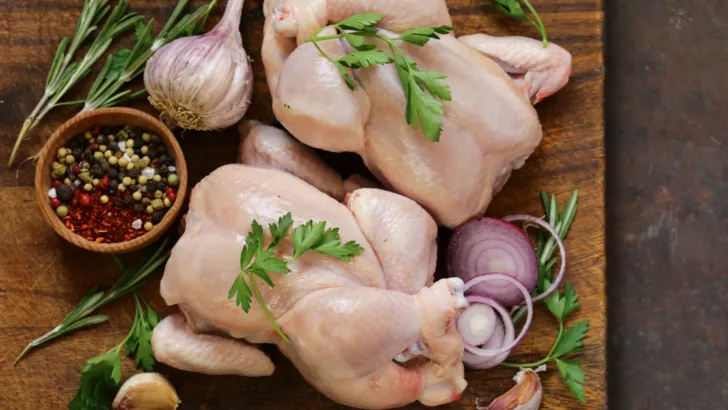
Versatile Spice Blend – Rediscovering the Magic of Kitchen Pepper
During the Middle Ages, Was Pepper One of the Most Expensive Spices in the World?
During the Middle Ages, pepper was one of the most expensive spices in the world. It was used as a currency and was even used to pay rent and taxes. The high cost of pepper was due to the fact that it had to be transported over long distances and was subject to high tariffs and taxes.
Pepper was grown in India and had to be transported overland and by sea to reach Europe. This was a long and dangerous journey, and many spices were lost or damaged along the way. The spice trade was also controlled by a small number of merchants who charged high prices for their goods.
As a result of these factors, pepper was incredibly expensive in the Middle Ages. It was often more expensive than gold, and it was only affordable for the wealthy. Pepper was used as a status symbol, and it was often given as a gift to royalty and other important figures.
The high price of pepper also led to the development of counterfeit pepper. This was pepper that was made from other materials, such as rice or sawdust. Counterfeit pepper was often sold as real pepper, and it could be difficult to tell the difference.
The high cost of pepper eventually led to the development of new trade routes. In the 16th century, the Portuguese explorers found a new route to India that bypassed the Arab traders. This led to a decrease in the price of pepper, and it became more accessible to the general population.
Today, pepper is still a popular spice, but it is much more affordable than it was in the Middle Ages. It is used in a variety of dishes, both savory and sweet. Pepper is also a good source of vitamins and minerals, and it has a number of health benefits.
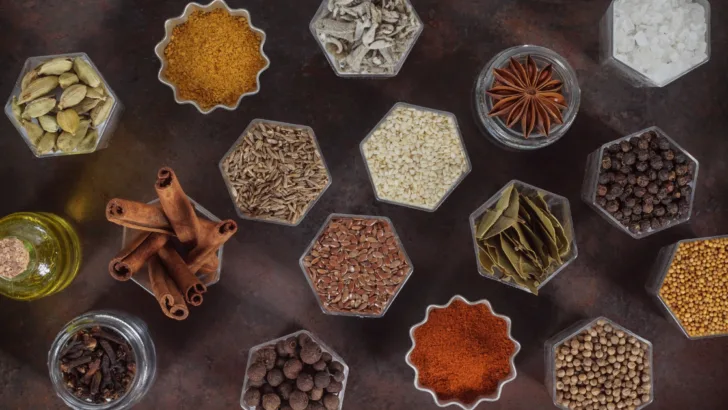
Time-Honored Taste – Embracing Tradition with Kitchen Pepper
What is Kitchen Pepper and how is it used today?
Today, pepper is still a popular seasoning and spice, and is used in a variety of dishes around the world. It is available in many different forms, including black, white, and green peppercorns, as well as ground pepper and pepper flakes.
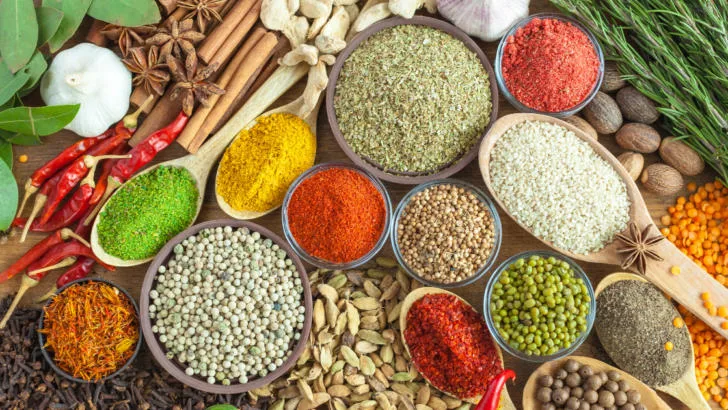
Kitchen Alchemy – Crafting Kitchen Pepper’s Enchanting Blend
Black pepper is the most common type of pepper and has a sharp, pungent flavor. White pepper is milder and has a more citrusy flavor. Green peppercorns are grassy and fruity, while pink peppercorns are milder and have a slightly sweet flavor.
Pepper can be used whole, ground, or crushed. It can be added to dishes at the beginning of cooking, or at the end to add a finishing touch. Pepper is a common ingredient in curries, stir-fries, and sauces. Pepper can also be used to add flavor to vegetables, meats, and seafood.
Pepper is a good source of vitamins and minerals, including vitamin C, potassium, and magnesium. It can help to improve digestion and boost the immune system. Pepper can also help to reduce inflammation and pain.
When cooking with pepper, it is important to start with a small amount and taste as you go. Pepper can be quite potent, and too much can overpower a dish.
Pepper is a delicious and versatile spice that has been used for centuries as a seasoning and spice. It is a good source of vitamins and minerals, and has a number of health benefits. When used in moderation, pepper can be a delicious and healthy addition to your diet.
Here are some examples of dishes that use pepper:
- Indian curries
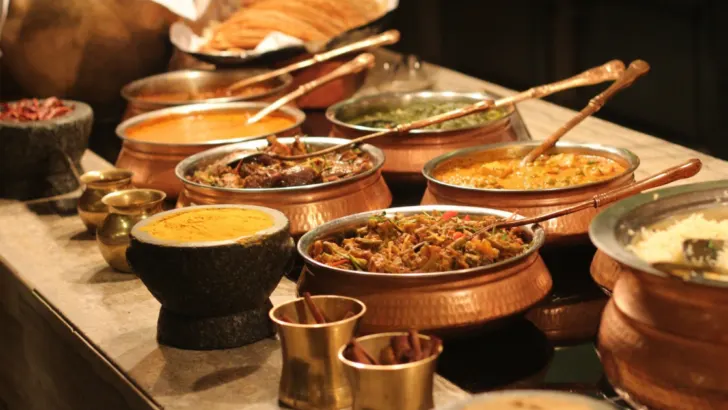
“Embrace Exquisite Flavors: A Spicy Symphony of Indian Cuisine with Black Pepper”
- Thai stir-fries
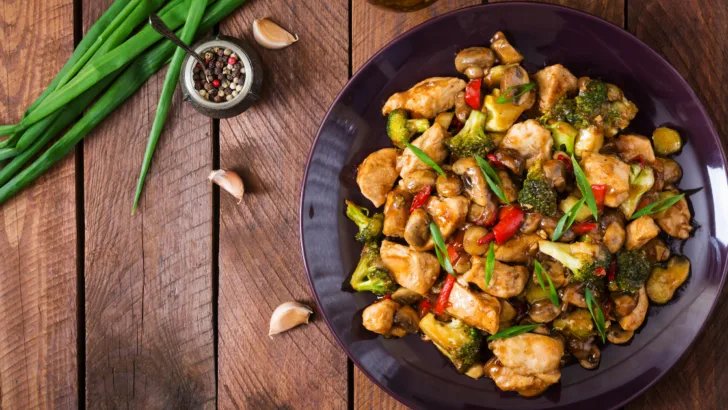
Add hint of Black pepper to spice it up
- Italian sauces
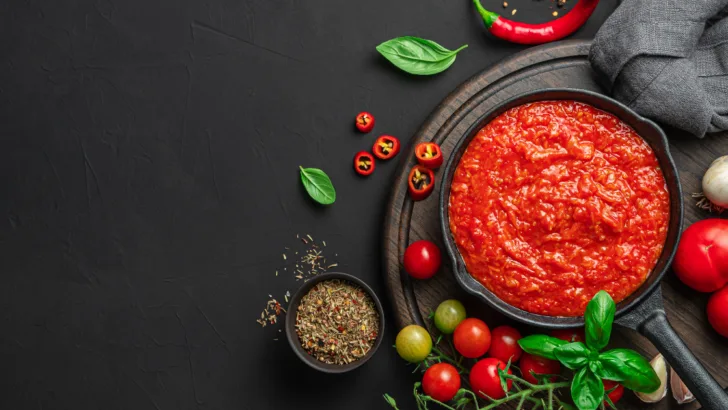
Spice up you sauces with a dash of black pepper
- Steak
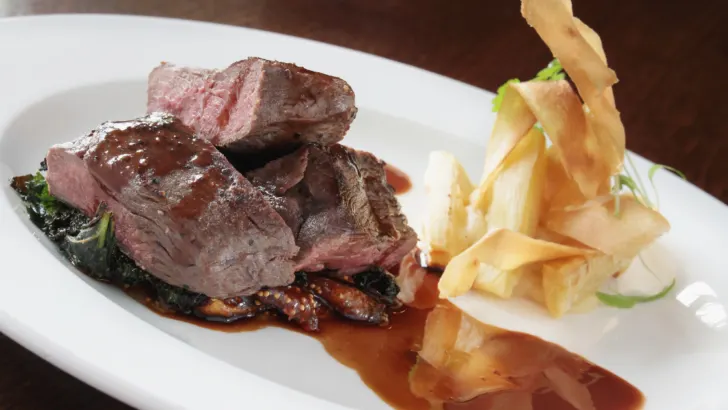
Sizzling Steaks, Boldly Peppered for Perfect Flavor Fusion
- Roasted vegetables
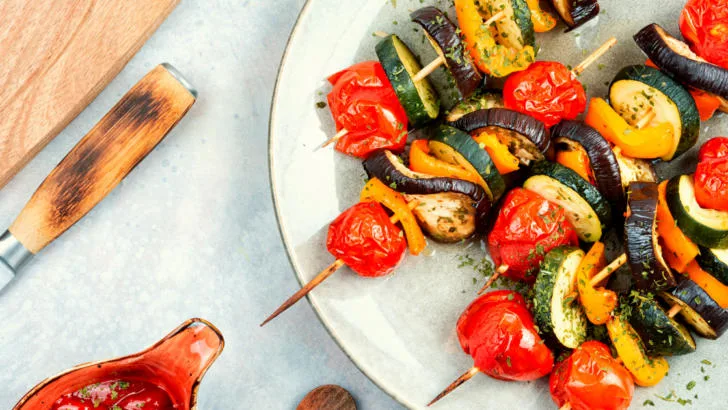
Elevate Roasted Goodness with a Peppered Zest
- Soups

Hearty Soups Infused with a Touch of Peppery Warmth
- Salads
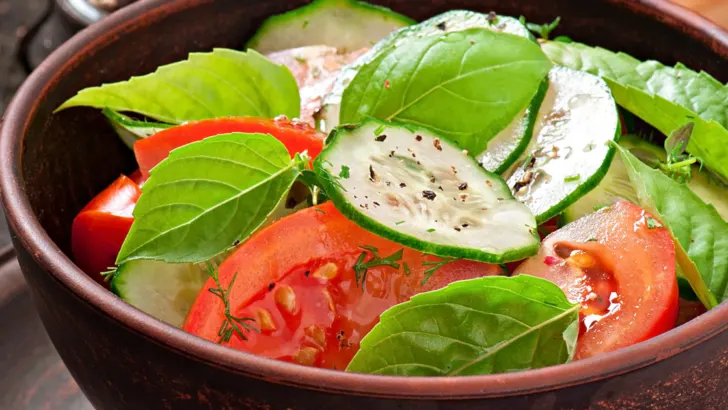
Crunch into Fresh Delight with a Peppered Twist
Pepper is a versatile spice that can be used to add flavor to a variety of dishes. Experiment with different types of pepper and dishes to find your favorites.
In conclusion, the history of kitchen pepper is a fascinating one, and it is amazing to think that this simple spice has played such an important role in the culinary traditions of so many different cultures throughout history.
Pepper has been used for centuries as a seasoning and spice, and its history can be traced back to ancient times. Pepper was one of the most expensive spices in the world during the Middle Ages, and it was often used as a form of currency.
Pepper was introduced to Europe by the Romans, and it quickly became popular. The spice was used for its medicinal properties as well as its culinary uses. By the Middle Ages, pepper was one of the most highly prized and expensive spices in the world.
The high price of pepper made it difficult for most people to afford, and it was often used as a status symbol. Only the wealthy could afford to use pepper on a regular basis.
The popularity of pepper declined in the 16th century, when the Portuguese explorers found a new route to India that bypassed the Arab traders. This led to a decrease in the price of pepper, and it became more accessible to the general population.
Today, pepper is still a popular spice in Europe and around the world. It is used in a variety of dishes, both savory and sweet. Pepper is also a good source of vitamins and minerals, and it has a number of health benefits.
It is amazing to think that this simple spice has played such an important role in the culinary traditions of so many different cultures throughout history. Pepper has been used to flavor food, to preserve food, and to treat medical conditions. It has also been used as a form of currency and as a status symbol.
Pepper is a versatile spice that can be used to add flavor to a variety of dishes. It is a good source of vitamins and minerals, and it has a number of health benefits. When used in moderation, pepper can be a delicious and healthy addition to your diet.
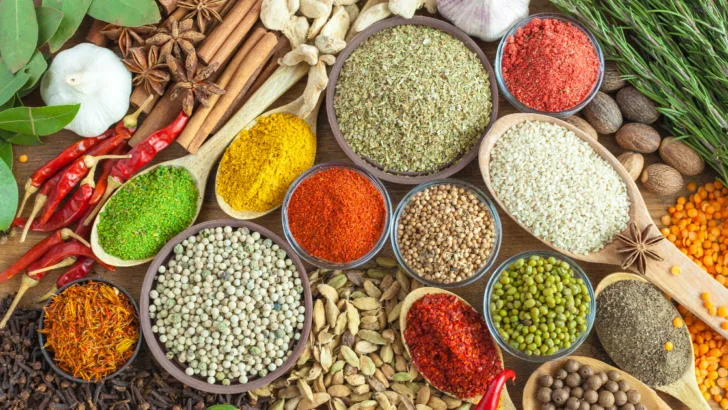
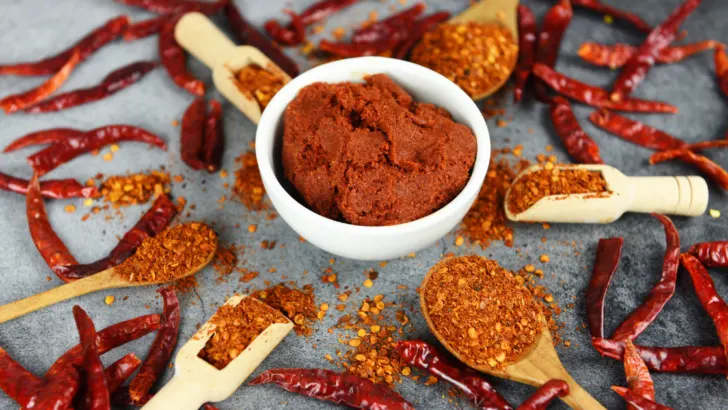
What are the Health Benefits of Kitchen Pepper?
I love using kitchen pepper in my cooking because it not only adds flavor to my dishes but also provides several health benefits. One of the most significant benefits of kitchen pepper is that it is a good source of vitamins and minerals. For instance, black pepper contains vitamin C, potassium, and magnesium, which are essential for maintaining good health.
In fact, just one teaspoon of black pepper contains 6% of the recommended daily intake of vitamin C and 3% of the recommended daily intake of potassium. Magnesium is also present in black pepper, which helps to support healthy nerve and muscle function.
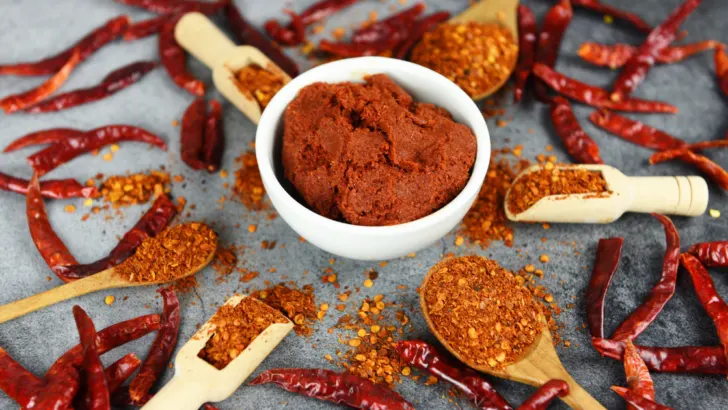
Can Pepper Help to Improve Digestion and Boost the Immune System?
Kitchen pepper has been used for centuries to aid digestion. The piperine in black pepper helps to stimulate the production of digestive enzymes, which can help to break down food more efficiently. Additionally, black pepper has antimicrobial properties, which can help to fight off harmful bacteria and viruses that can cause digestive problems.
Moreover, kitchen pepper can also help to boost the immune system. The antioxidants in black pepper can help to protect the body against free radicals, which can damage cells and lead to chronic diseases. Furthermore, the piperine in black pepper can help to enhance the absorption of nutrients, which can help to support overall health and wellbeing.
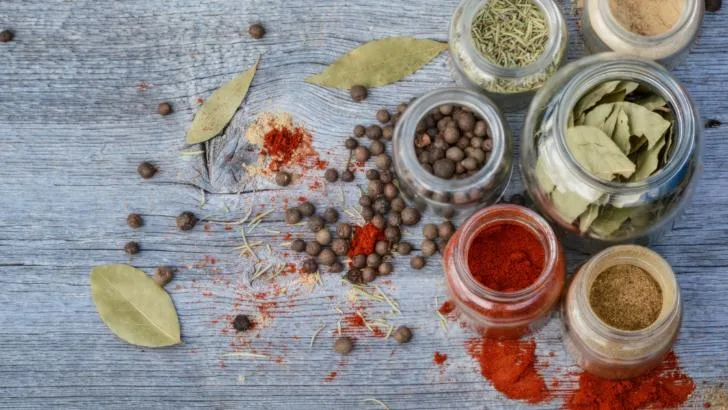
Pepper Can Also Help to Reduce Inflammation and Pain
Another significant benefit of kitchen pepper is that it can help to reduce inflammation and pain. The piperine in black pepper has been shown to have anti-inflammatory properties, which can help to reduce inflammation in the body. This can be especially beneficial for people with conditions such as arthritis, which is characterized by inflammation in the joints.
Moreover, the capsaicin in cayenne pepper has been shown to have pain-relieving properties. Capsaicin works by blocking pain signals to the brain, which can help to reduce pain and discomfort. However, it is important to note that cayenne pepper can be very spicy, so it should be used in moderation.
Overall, kitchen pepper is an excellent addition to any diet. It not only adds flavor to dishes but also provides several health benefits, including improving digestion, boosting the immune system, and reducing inflammation and pain.

How to Use Kitchen Pepper
Kitchen pepper is a versatile spice blend that can be used to add flavor to a wide range of dishes, from savory stews and curries to sweet baked goods. Here are some specific tips on how to use kitchen pepper in your cooking:
- Start with a small amount and taste as you go. Kitchen pepper is quite potent, so it’s important to start with a small amount and taste as you go. This will help you to avoid overseasoning your dish.
- Use different types of peppercorns for different dishes. There are many different types of peppercorns available, each with its own unique flavor profile. For example, black peppercorns have a sharp, pungent flavor, while white peppercorns have a more citrusy flavor. Experiment with different types of peppercorns to find the ones that you like best for each dish.
- Crush or grind your peppercorns before using them. Crushing or grinding your peppercorns releases their essential oils, which will give your dish a more intense flavor. You can crush peppercorns with a mortar and pestle, or you can use a pepper grinder.
- Add kitchen pepper to your dishes at the beginning of cooking or at the end. If you want your kitchen pepper to have a more subtle flavor, add it to your dishes at the beginning of cooking. If you want your kitchen pepper to have a more pronounced flavor, add it to your dishes at the end.
- Pair kitchen pepper with other spices and herbs. Kitchen pepper can be paired with a variety of other spices and herbs to create delicious and flavorful dishes. For example, you can add kitchen pepper to curries, stir-fries, marinades, and sauces. You can also add kitchen pepper to baked goods, such as cookies, cakes, and muffins.
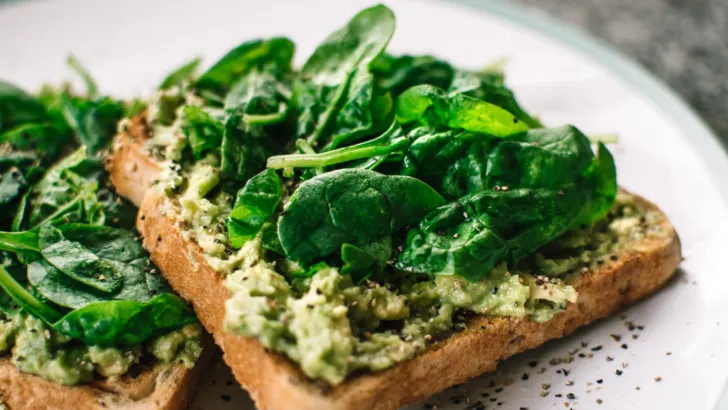
Is kitchen pepper a Common Ingredient in Curries, Stir-Fries, and Sauces?
Kitchen pepper is a common ingredient in many Asian and African cuisines, particularly in curries, stir-fries, and sauces. It is often used in combination with other spices like cumin, coriander, and turmeric to create complex and flavorful dishes.
Here are some specific examples of how kitchen pepper is used in curries, stir-fries, and sauces:
- In curries, kitchen pepper is often used to add a sharp, pungent flavor. It is often added to the curry paste at the beginning of cooking, along with other spices like cumin, coriander, and turmeric. This helps to create a well-rounded flavor profile that is both savory and flavorful.
- In stir-fries, kitchen pepper is often used to add a bit of heat. It is often added to the stir-fry at the end of cooking, along with other vegetables and proteins. This helps to brighten up the dish and give it a bit of a kick.
- In sauces, kitchen pepper is often used to add depth of flavor. It is often added to the sauce at the end of cooking, along with other ingredients like tomatoes, onions, and garlic. This helps to create a rich and flavorful sauce that is perfect for dipping or drizzling over meats and vegetables.
No matter how you use it, kitchen pepper is a versatile spice that can add a touch of flavor to any dish. So next time you’re cooking up a curry, stir-fry, or sauce, be sure to add a pinch of kitchen pepper for an extra kick of flavor!
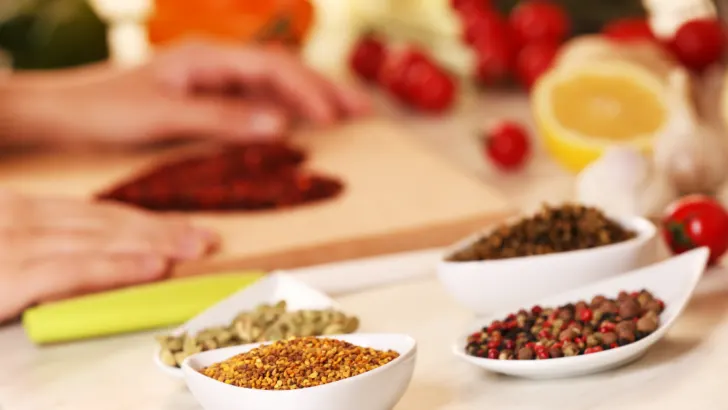
Can Pepper Also Be Used to Add Flavor to Vegetables, Meats, and Seafood?
In addition to curries and stir-fries, kitchen pepper can also be used to add flavor to vegetables, meats, and seafood. Here are a few ideas:
- Sprinkle kitchen pepper over roasted vegetables, such as carrots, broccoli, or Brussels sprouts, for a burst of flavor.
- Season grilled meats, such as chicken, steak, or pork, with kitchen pepper before cooking for a savory, umami flavor.
- Use kitchen pepper to season fish or shrimp before cooking. This will help to enhance the natural flavor of the seafood and make it more flavorful.
- Add kitchen pepper to soups and stews for a bit of heat and depth of flavor.
- Sprinkle kitchen pepper on popcorn for a delicious and healthy snack.
- Add kitchen pepper to vinaigrettes and marinades for a flavorful and versatile dressing.
Pepper is a versatile spice that can be used to add flavor to a variety of dishes. Experiment with different types of pepper and dishes to find your favorites.
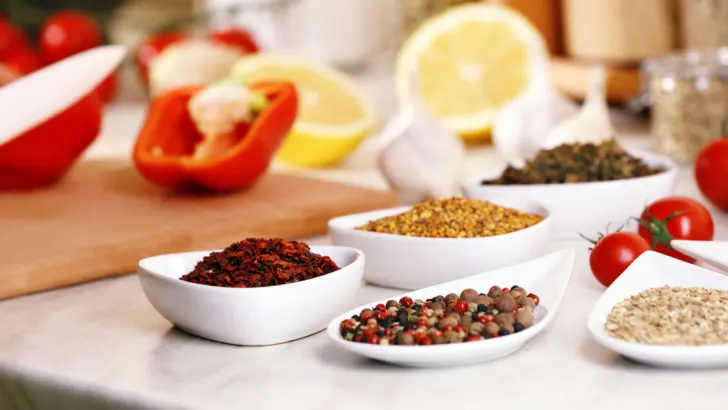
How to use Pepper?
When cooking with kitchen pepper, it is important to start with a small amount and taste as you go. This will allow you to adjust the seasoning as needed and prevent over-seasoning your dish. Remember, it’s always easier to add more seasoning than to take it away.
Overall, kitchen pepper is a versatile and flavorful spice blend that can be used in a variety of dishes. Whether you’re cooking up a savory curry or a sweet dessert, kitchen pepper can add depth and complexity to your meals.
Frequently Asked Questions
What spices are typically included in Kitchen Pepper?
Kitchen Pepper is a blend of spices that was commonly used in American colonial cooking. The spices typically included in Kitchen Pepper are black pepper, white pepper, cinnamon, nutmeg, cloves, and ginger. However, there are many variations of Kitchen Pepper and some may include additional spices such as cardamom, allspice, and coriander.
How is Kitchen Pepper commonly used in cooking?
Kitchen Pepper is a versatile spice blend that can be used in a variety of dishes. It is commonly used to season meats, soups, stews, and vegetables. It can also be used as a rub for meats or as a seasoning for roasted vegetables. The flavor of Kitchen Pepper is warm, slightly sweet, and slightly spicy, making it a great addition to many different types of dishes.
What are some variations of Kitchen Pepper?
There are many variations of Kitchen Pepper, and the exact blend of spices can vary depending on the recipe or the cook. Some variations may include additional spices such as cardamom, allspice, or coriander. Some recipes may also call for different ratios of the spices, depending on the desired flavor profile.
What is the history of Kitchen Pepper?
Kitchen Pepper has a long history in American colonial cooking. It was a staple spice blend that was used to season a wide variety of dishes. Kitchen Pepper was also used as a medicinal spice blend, as it was believed to have health benefits such as aiding digestion and preventing illness.
Can Kitchen Pepper be used as a substitute for other spices?
Kitchen Pepper can be used as a substitute for other spices in many recipes. For example, it can be used as a substitute for cinnamon, nutmeg, or cloves in baked goods. It can also be used as a substitute for black pepper or white pepper in savory dishes.
What are the benefits of using Kitchen Pepper in cooking?
Kitchen Pepper has a warm, slightly sweet, and slightly spicy flavor that can add depth and complexity to many different types of dishes. It is also a versatile spice blend that can be used in a variety of recipes. Additionally, some of the spices in Kitchen Pepper, such as ginger and cinnamon, have been shown to have health benefits such as reducing inflammation and improving digestion.
